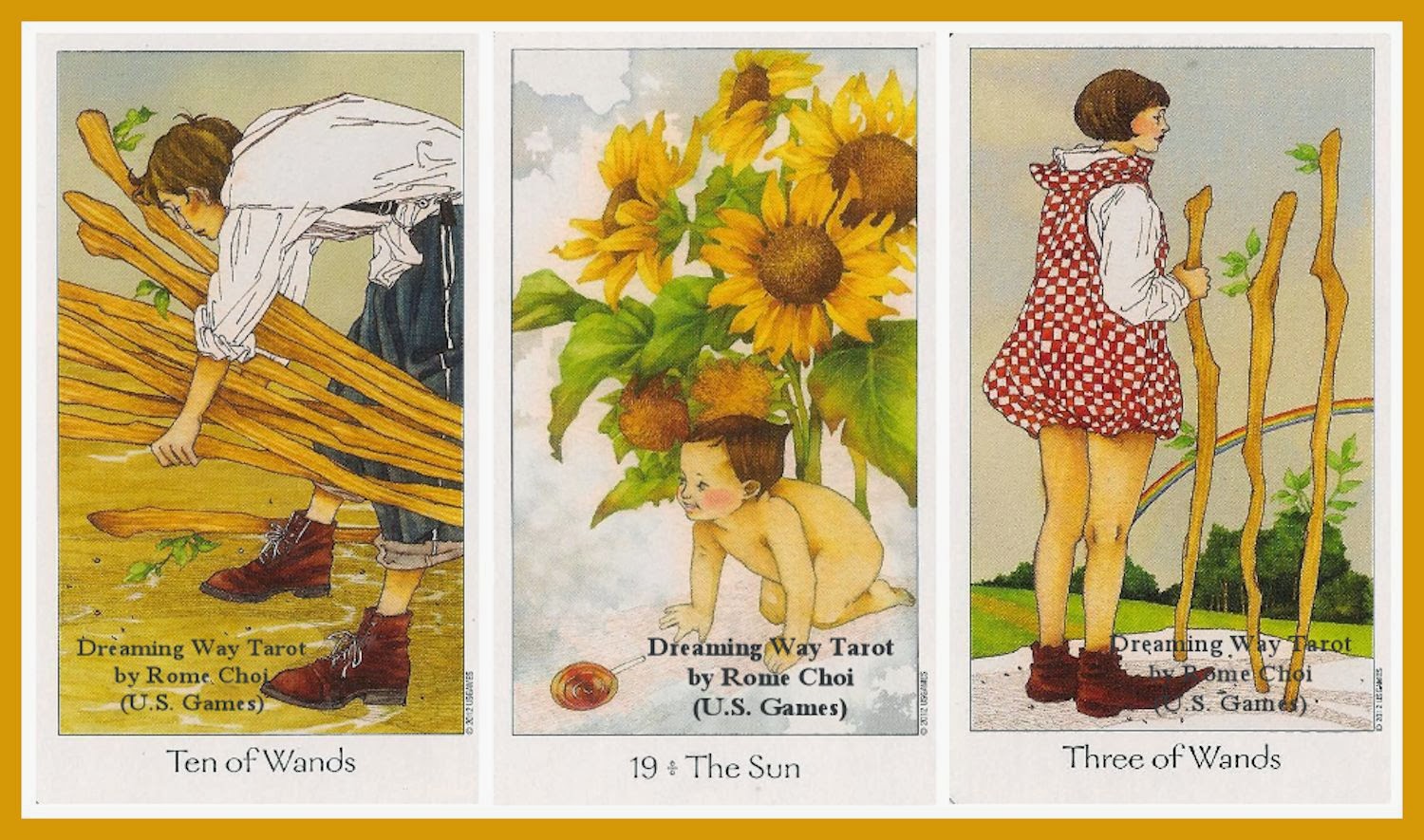Quick Astrology Lesson
 |
| Mercury |
 |
| Capricorn |
So when we put Mercury in Capricorn, we usually have an organized mind along with the tendency to be cautious, methodical, and a hard worker. Mercury-in-Capricorn decides what it wants and proceeds to achieve it with great determination and careful planning. A tendency toward a pessimistic viewpoint is not uncommon with this placement. In Capricorn, any “trickster” tendencies are likely to be muted by Saturn’s uncompromising frown. It’s unlikely that Mercury enjoys this type of “adult supervision.”
Turning to the Tarot
The Golden Dawn links The Magician card with Mercury and The Devil with Capricorn. I am using the Celestial Tarot by Kay Steventon and Brian Clark (U.S. Games Systems, Inc.), but also providing images from the Rider (Rider-Waite-Smith or RWS) Tarot conceived by A.E. Waite (U.S. Games, Inc.) to show a more traditional depiction of these two cards.
In his book The Tarot (Macoy Publishing Company), Paul Foster Case writes of the Devil: “Capricorn, the Goat, is a cardinal, earthy sign, governing the knees, to which we are brought in prayer by our sense of bondage and personal insufficiency. The natives of Capricorn are said to be quiet, studious, and somewhat inclined to materialism.” Of the Magician/Mercury connection, Case writes, “The Mercury vibration represents intellect.”
Looking at the CELESTIAL TAROT cards, I get the distinct impression that these two characters are not friends. On Key 15, the horned goat-god Pan looks at us, not at the other card. On Key 1, the young god Mercury appears to gaze at Pan with disapproval or suspicion. Pan perches on a mound painted in the colors of Earth – brown, green, tan. Mercury appears to be standing in the sky, with cloud-like swirls of white around his feet and ankles. Or, as Clark puts it, “A creative process is underfoot…”
In the RIDER TAROT, I see quite a bit more that interests me. First of all, the two main figures on these cards assume very similar, if not identical, poses. Both face forward, raising their right arm, with their left arm lowered toward the ground. However, even in their similarities there are radical differences of purpose.
The Devil’s right hand has all its fingers open. On the palm of this hand is an astrological symbol of the planet Saturn, ruler of Capricorn. His left hand holds a torch, which Case describes as “burning wastefully, and giving little light.” I have no idea if Waite intended it, but to me, the Devil’s right hand seems to be giving us a “STOP” or “HALT” gesture. Certainly that is in keeping with the idea of Capricorn/Saturn as restrictive, limiting influence. The expression on the Devil’s face is dour, even menacing.
In contrast, the Magician’s uplifted right hand suggests that he is drawing power from above. He points downward with his left hand, directing this power to a plane below. The energy here is free flowing, channeled by the Magician, whose facial expression is pleasant and benign. Another thing that Waite may or may not have intended is the link here with the two signs ruled by Mercury: Gemini (Air) and Virgo (Earth). The Magician’s right hand reaches into “Air” and his right points down toward “Earth.”
Astrologically, the placement of the planet Mercury in the sign Capricorn gives Capricorn (and therefore Saturn) strong influence over the behavior of Mercury in my birth chart. It’s not hard to get a mental image of a young, energetic, open-minded Mercury feeling oppressed by the stern management style of Capricorn/Saturn. After all, on the Rider card, the Devil has chained two people together by the neck to the half-cube on which he sits. Case writes that “a cube represents That which was, is, and shall be, a half-cube symbolizes half-knowledge of that reality. Half-knowledge perceives nothing but the visible, sensory side of existence.”
Imagine the frustration Mercury (planet of the mind) must feel, chafing under the talons of the Devil and his “half-knowledge.” I get the sense that if at all possible, the Devil will keep Mercury from knowing anything but the visible, sensory side of things. Fortunately, Mercury can choose not to limit his knowledge in that way. The two people chained on the Devil card could slip the chains off their necks and walk away. They choose not to, perhaps out of fear or perhaps out of laziness.
For me personally, the placement of Mercury in Capricorn suggests the possibility that I will tend to self-limit my mind, my words, my thoughts, and everything else that Mercury represents. This is not always a bad thing, but it could be. Fortunately, we are not controlled by our birth charts. Knowing that I have this planetary placement gives me the opportunity to challenge my perceptions and to be suspicious of any negative influence Capricorn/Saturn/The Devil may exert.




















